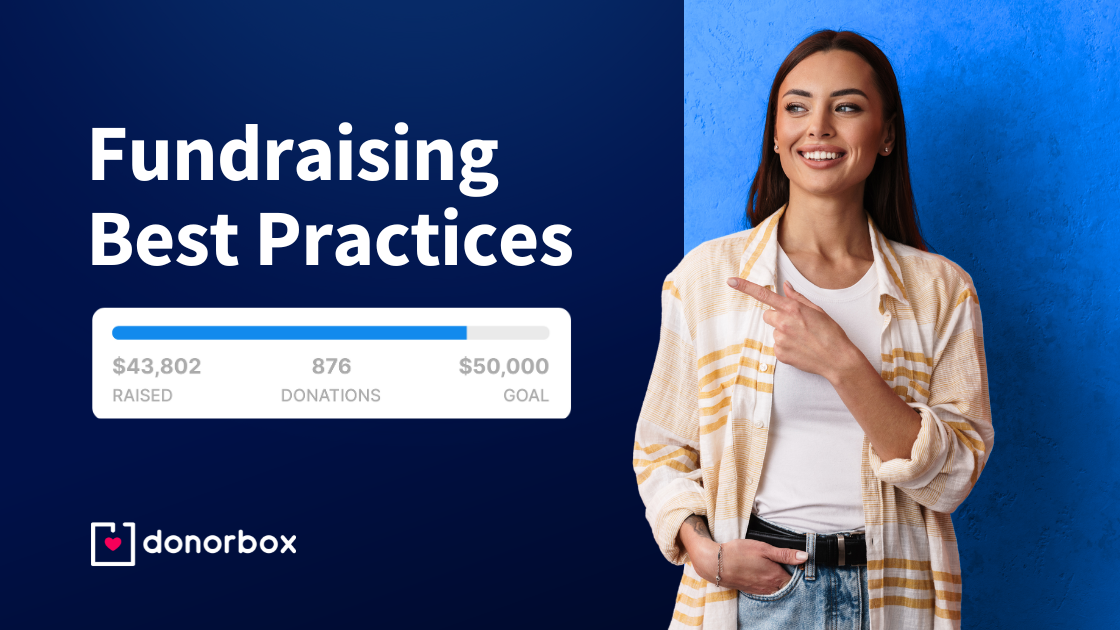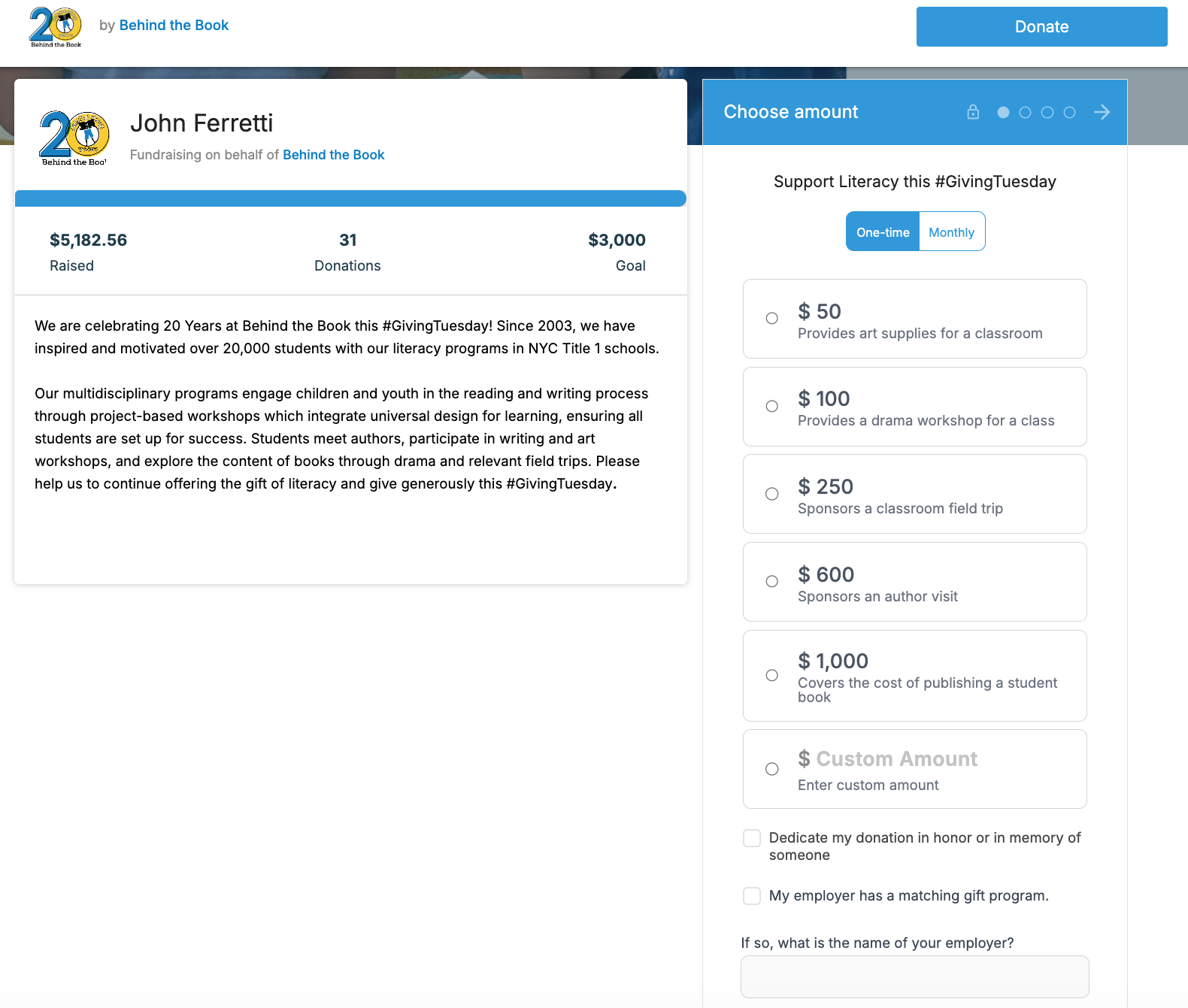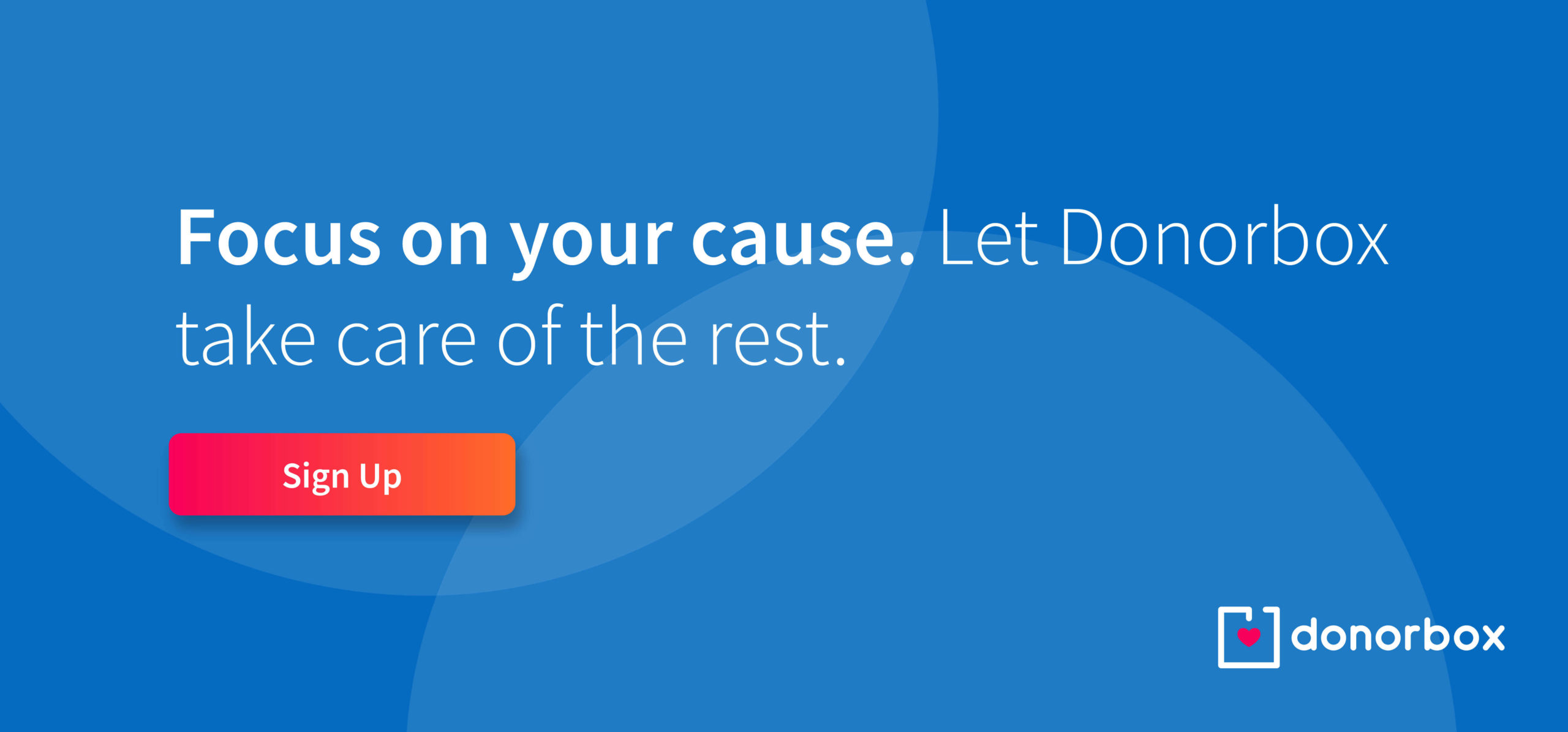9 Fundraising Best Practices to Get More Donations in 2025
Looking to get more donations this year? Follow our proven best practices to raise more money with effective tools, fundraising methods, and ideas. Keep reading!

Looking to get more donations this year? Follow our proven best practices to raise more money with effective tools, fundraising methods, and ideas. Keep reading!

Nonprofits have critical goals and purposes but without the funds to get them done, their missions will never be achieved. Fundraising is necessary in the nonprofit world, but not everyone is comfortable or educated on the best ways to raise funds for an organization.
This article discusses nine best practices nonprofits should participate in to raise more money and reach their goals.

Before hosting an event or online campaign, nonprofits must create a strategic plan. A strategic plan focuses on a nonprofit’s mission and lays out how the organization will reach it. Strategic plans include organizational goals, annual budget, fundraising goals, donor management, volunteer onboarding, staff management, marketing techniques, and more. Strategic plans require all members of the leadership team to participate.
When creating your strategic plan, it is best to develop SMART goals to ensure the success of your fundraising. SMART goals are specific, measurable, attainable, relevant, and time-based. By setting these goals, your fundraising office and board of directors are more likely to stay on track and not get distracted.
Finding the right software that’s affordable and effective is vital to fundraising. When choosing a fundraising tool, nonprofits should look for the following.
Most online donors have a smartphone and will use that over their computer to research and donate to a nonprofit. To ensure you receive that donation, nonprofits must choose a mobile-friendly solution. Donation forms that do not load quickly and fit on a mobile phone will not get the response organizations want.
Customizable fundraising pages allow nonprofits to create forms and customize campaign pages as per their brand, logo, and colors. Nonprofits should be able to create donation forms with amounts and details that work best for each donor group.
You should be able to track all donations against your donor records. Your fundraising tool should automatically do this, at the same time let you record offline donations made at your in-person fundraising events. A way to track your donations gives you endless opportunities such as finding major donor prospects, segmenting donors as per their giving amounts, determining your major gift threshold, knowing the average gift amount at an event, and more.
If you find a fundraising tool that doubles as a donor management solution, there’s nothing like it! Donorbox, for example, does the same. It lets you maintain all your donor records, segment them for personalized appeals, and add notes to your donor records to keep track of all communications.
Online donation processors can collect funds in various ways, including credit card payments, PayPal, ACH bank payments, Google Pay, Apple Pay, Venmo, and more. Offering more than one way to donate will give supporters a better feeling about the nonprofit.
Nonprofits appreciate recurring donations because they are dependable and can be added to their annual budget. A fundraising tool that makes collecting recurring donations easy should be prioritized.
Does the fundraising tool offer you crowdfunding opportunities, a peer-to-peer fundraising feature, event ticketing, or text-to-give? They are new-age fundraising techniques that work. You should definitely consider looking for these options before you finalize a tool. The below image is an example of a successful ongoing crowdfunding campaign that will help you gain more insights into the feature.
Your donors should receive donation receipts acknowledging their gifts and for the year-end tax purposes as soon as possible. If the process is automated and you have a chance to customize the receipts beforehand, that’s even better. Look for this feature in your fundraising tool.
This Donorbox video will help you realize the importance of automated 501(c)(3) donation receipts, the right time to issue them, how to create one, and everything else you want to know about donation receipts.
Your nonprofit should have a dedicated plan to research prospects, acquire donors, segment, and steward them for a long-lasting relationship. To start with, know all types of donors that you can possibly target. Once you’ve done so, use the moves management process to effectively reach them and make the ask.
Moves management uses a step-by-step process that includes segmenting donors into each category, defining goals for each type of donor, and sending personalized communication to build and strengthen relationships with donors. As you focus on building these relationships, you should track when you send communication pieces, and how each donor reacts.
Pro tip: Invest in a donor management tool to maintain a clean donor database, unique donor records, keep track of your donor communications, segment donors as per categories, and integrate with marketing tools for better communications. Donorbox not only offers you all that but also gives your donors their own donor accounts that they can log in to and use to manage their donation plans. Our QuickDonate feature makes repeat donations easier than ever. Your donors can quickly repeat a donation right from their mobile any time they want without having to refill the donation form. Check out this video here to learn more about this powerful giving feature –

Every business will tell you how essential customer testimonials are to their marketing efforts. Nonprofits are no different. Organizations have realized the importance of sharing stories from beneficiaries. These stories show how people’s lives have been impacted by the organization, and how necessary donations are to their success.
When writing beneficiaries’ stories, you must make them specific and focus on ways donors have made a difference instead of just the organization. Nonprofits that do not deal directly with individuals or animals can ask donors to write their own tales on how their involvement has changed their lives.
As we’ve said earlier, recurring donors are vital to nonprofits. Nonprofits would love to turn every supporter into a monthly donor, but many do not have a recurring donations plan to do this. Nonprofits that include the option to give monthly/weekly/yearly will benefit from these gifts and can plan for more programs and fundraisers because the amount from these donors is added to their annual budget.
If your organization has projects that need significant funding throughout the year, a recurring donor program may be best. After creating a campaign page, share the campaign with social media and email blasts. During other events and fundraising campaigns, your nonprofit can share the option for those donors to give every month/quarter/year. Adding a recurring donations option to your online donation page and in all mailed marketing pieces will help keep this option in donors’ minds.
We love how The City showcases the importance of recurring donations on their donation form by making the Monthly donation interval the default option and marking it as preferred with a heart.

Impactful stories aren’t the only way to reach people who’ve never heard about you. Another way is by asking donors to share your story with friends and family. Peer-to-peer campaigns are excellent ways to do this. You can invite your best supporters to create their own fundraising pages and start fundraising for your nonprofit. This helps you spread the word about your organization, acquire new donors, and boost donations through the power of your donors’ network.
Nonprofits can support them by sharing success stories and images. You can keep your advocates updated on how the campaign is doing and how their donations are already having an impact.
Donorbox offers a powerful peer-to-peer fundraising feature to all its nonprofits. It takes only toggling a switch on the dashboard to get started. You can invite your supporters, friends, or anyone you deem fit for this role and they can start fundraising in minutes. Here’s an excellent example of a peer campaign that’s successfully raised funds for a nonprofit.

Fundraising events like gala, auctions, walk-a-thons, raffles, and others are often the primary sources of funds for a nonprofit. But with changing times, nonprofits have started to look for ways to adopt newer techniques and giving methods. Advanced giving techniques like a QR code for your online donation page, text-to-give, and membership programs can take your fundraising to the next level.
QR codes can be the easiest way to encourage attendees to make a donation online. Download and print the QR code for your donation page and place it at your event venue, on tables, and other common places to inspire more donations.
Text-to-give is a simple but effective giving method that helps attendees make a donation right through a text. You can share your campaign ID and a texting number with your donors. They can text the ID to the number to receive the link to your mobile-friendly donation page. Next time they want to repeat a donation, it should be even easier without the need for visiting the page again. Here’s a glimpse into how Donorbox text-to-give works –

If you are having a membership program or just getting started, an event is the best way to promote it and acquire new members. Such programs not only help you create a loyal supporters base but also raise significant funds on a monthly/yearly basis. Approach people who have made donations during the event and you may be surprised with the number of new members you acquire this way!
Pro tip: Create an online event page to make it more convenient for your attendees to buy tickets and share their preferences. It also helps you maintain and track all your sold tickets and purchasers’ information on the backend. Plus, an event ticketing solution like Donorbox also helps you accept donations from the event page and do much more. Know more about Donorbox Events here.

Feedback is vital to a nonprofit’s marketing plan as well as donor engagement. Nonprofits can gain this feedback through various ways, including online surveys, donor calls, and in-person meetings. Anytime your organization has a chance to speak with donors, you should ask for feedback and show your interest in hearing from them. Donors will appreciate your interest in their opinions and will be more likely to continue giving.
Making personal calls may seem like a difficult task but you should practice this more often for the best results. Have your board members make calls to your recurring donors, members, and major donors and ask their opinion. This way your donor will know you think of them as more than a cash machine and will have a better chance of greater involvement. Note down their suggestions (add them to your donor records on your fundraising tool) and assure them the same will be implemented at the next campaign or event.

Nonprofits that do not track how their fundraising campaigns do will miss critical information. Without these details, nonprofits cannot improve fundraising efforts and may be stuck with traditional methods that no longer work for their donor base.
A few details an organization should learn from their campaign include:
Answers to these questions will help determine where changes must be made and where the organization has found success.
When marketing the success of these campaigns, donors appreciate data as well. Including these details in each campaign piece will help donors see how their gifts are used and who is benefiting from their generosity.

Fundraising best practices can work for all nonprofits but can be customized to work with individual organization needs. Many of these practices require additional technology. But investing in it will be worth it.
Donorbox can help nonprofits manage and segment donors, develop a recurring donation program, and turn donors into advocates. Our online fundraising solution is the most affordable out there and includes advanced features like crowdfunding, peer-to-peer campaigns, membership campaigns, event ticketing, text-to-give, and more. Learn more about our features here.
If you’d like more fundraising ideas, tips, resources, and nonprofit management tips, check out our blog.

Subscribe to our e-newsletter to receive the latest blogs, news, and more in your inbox.

